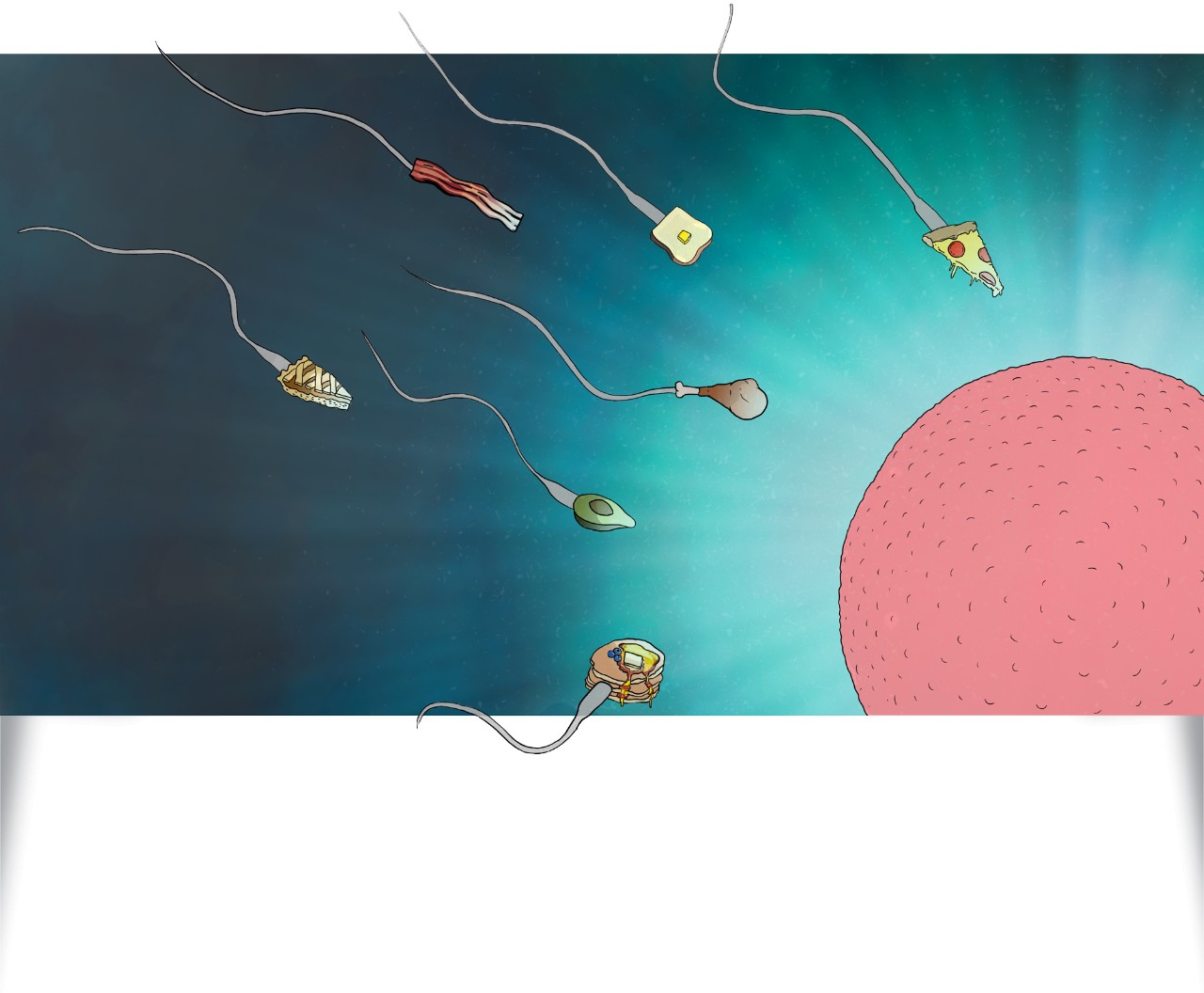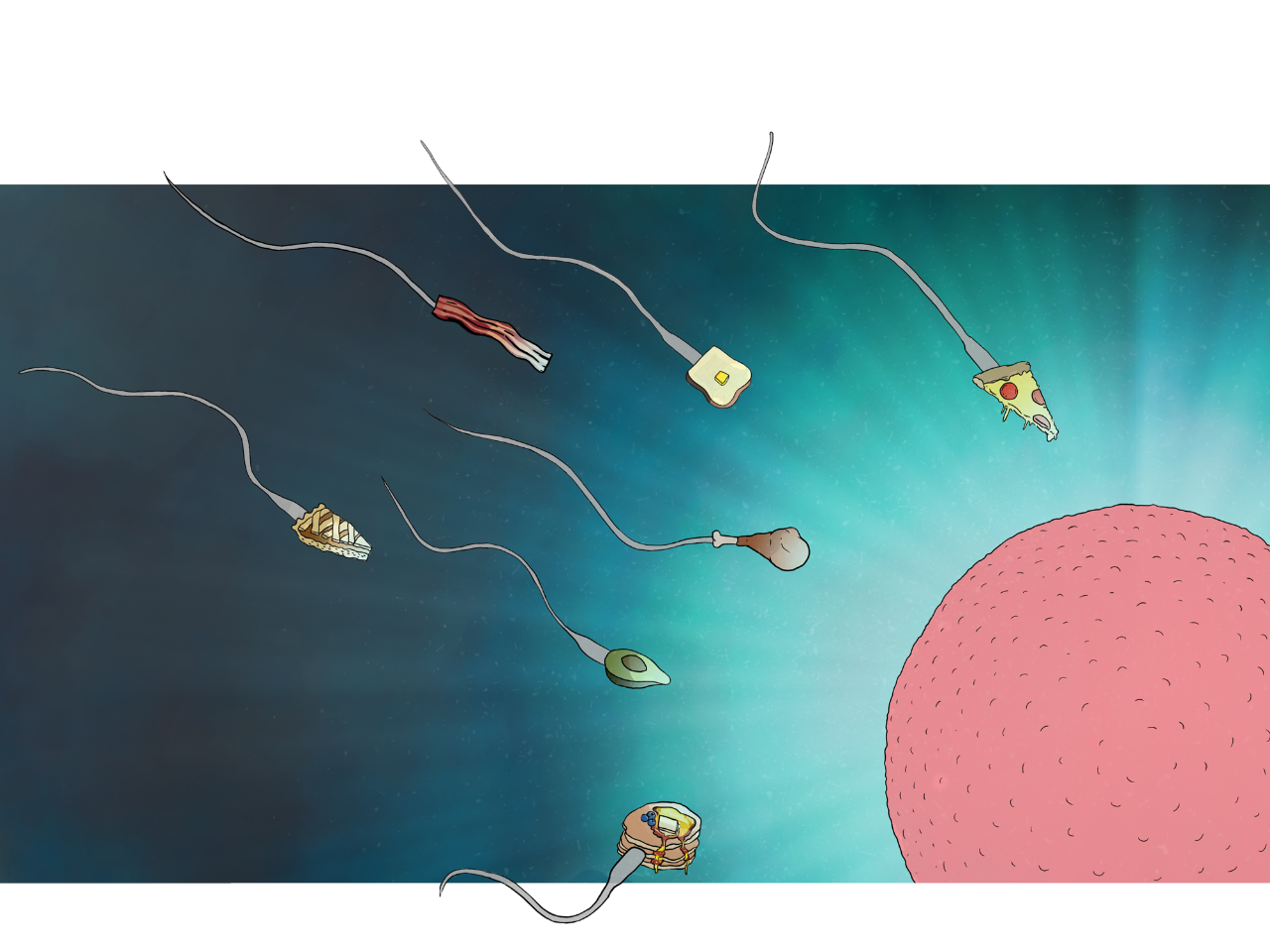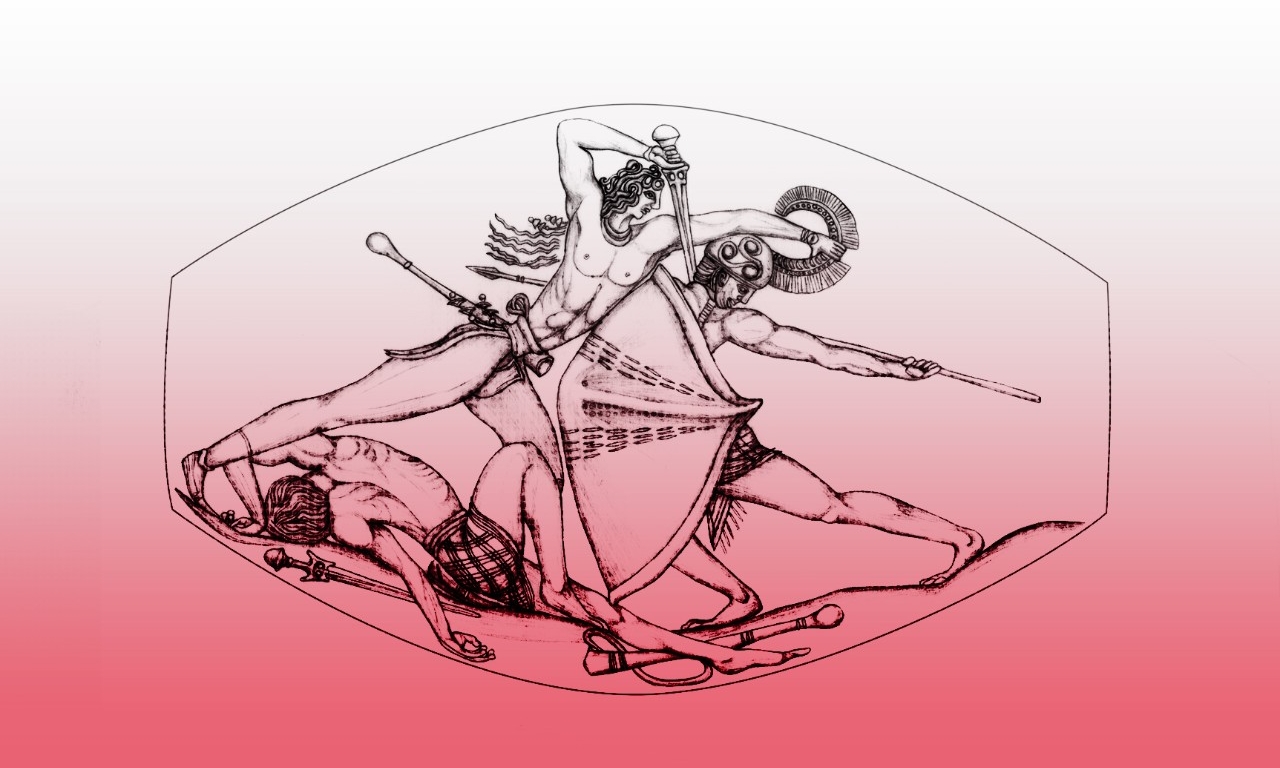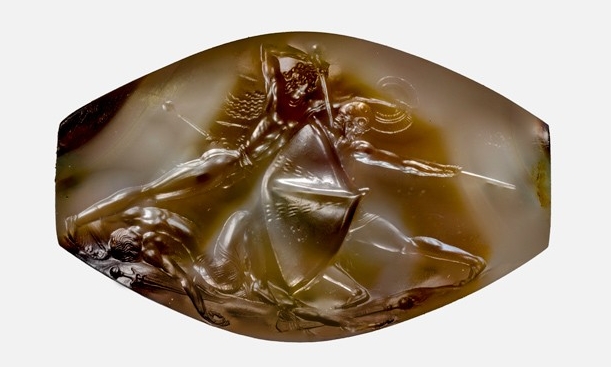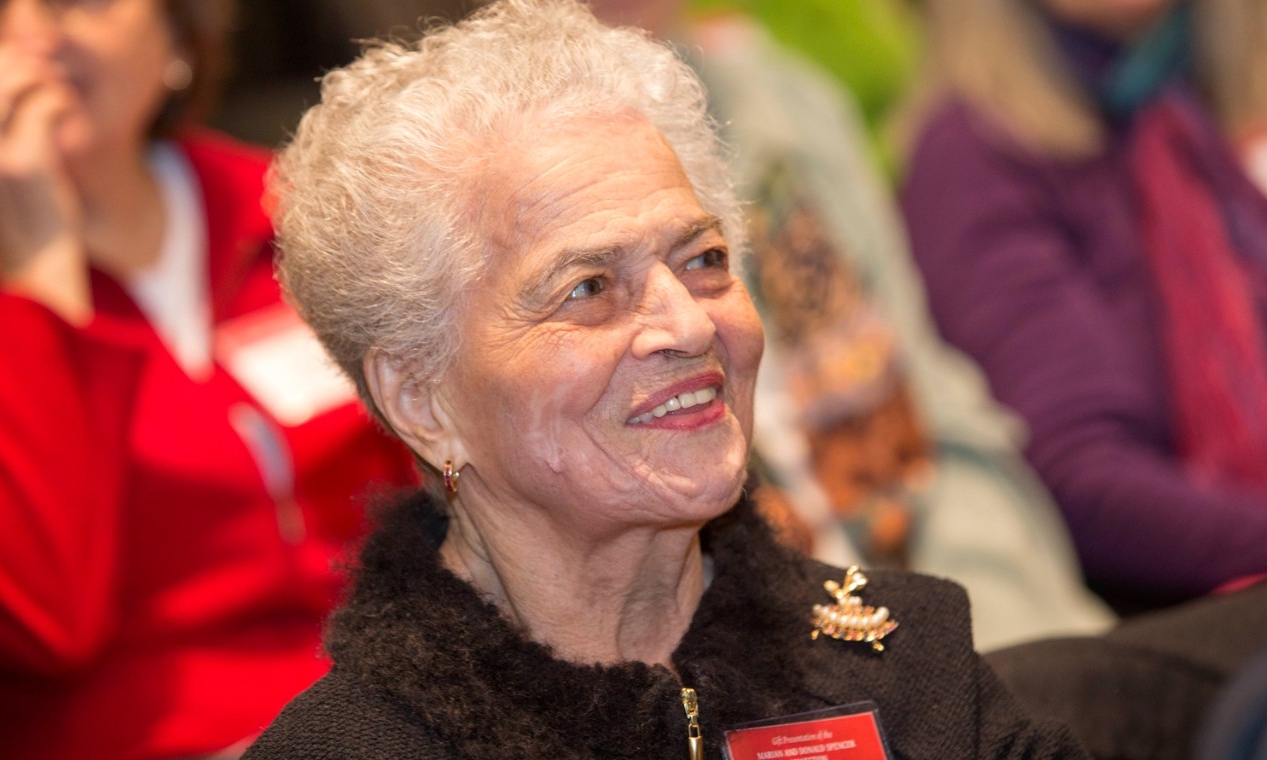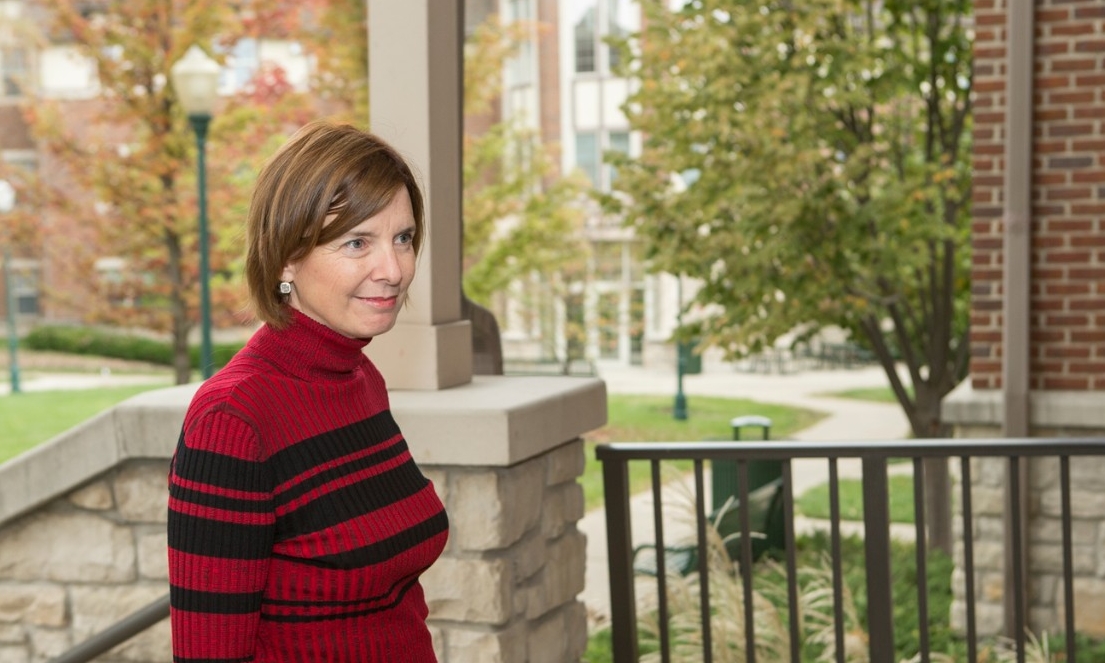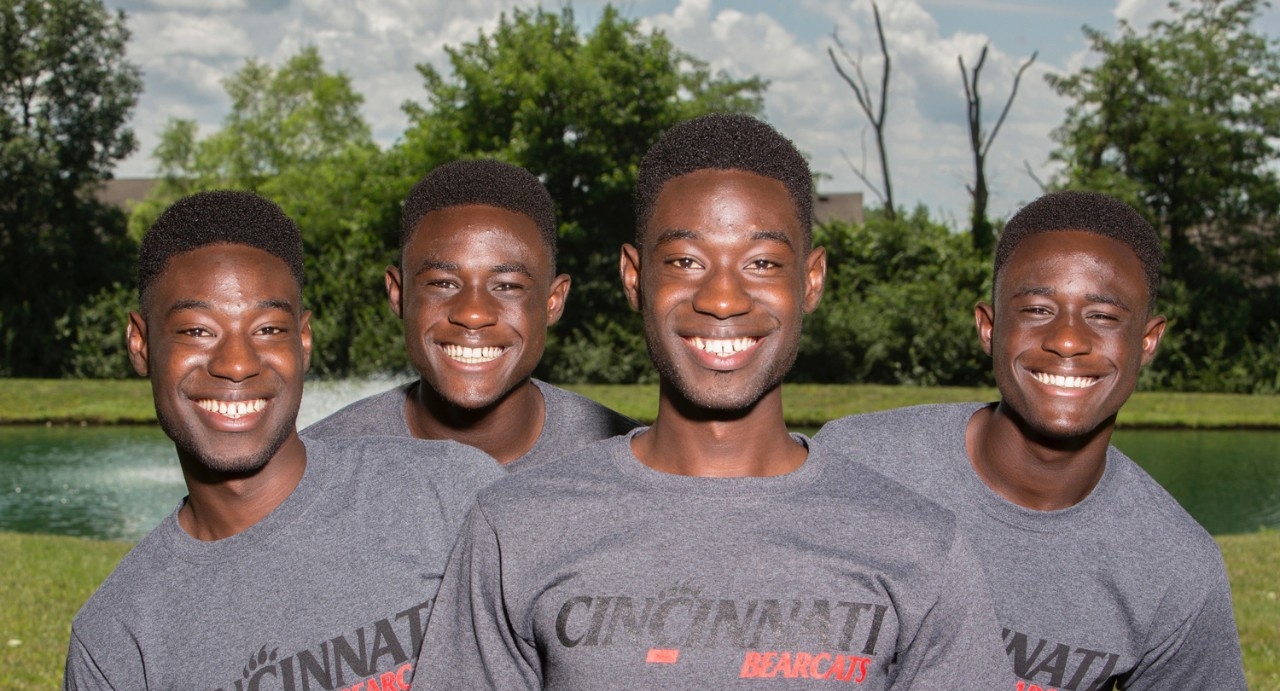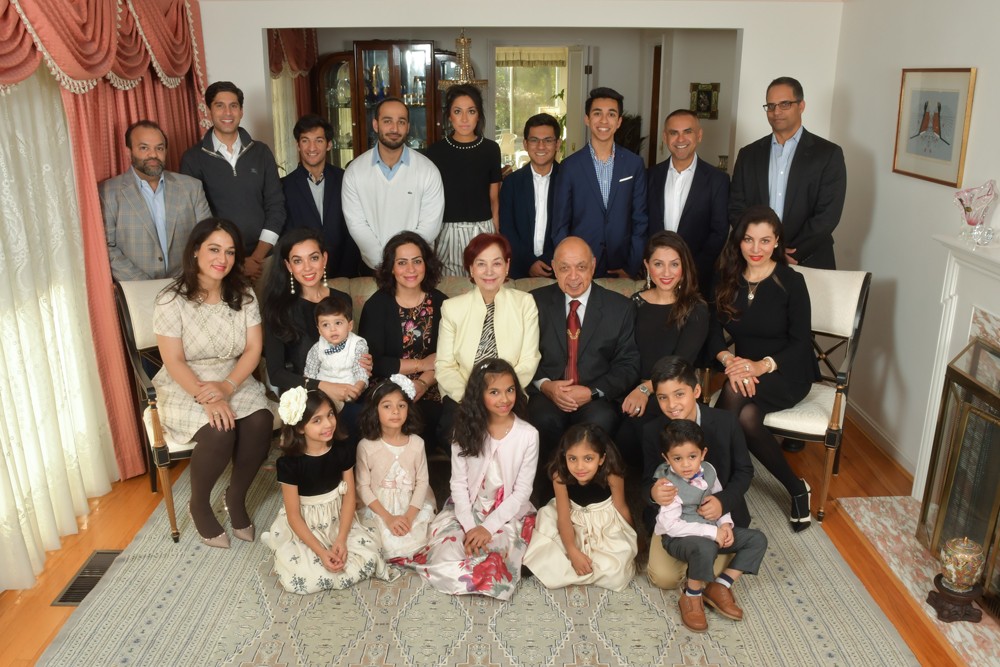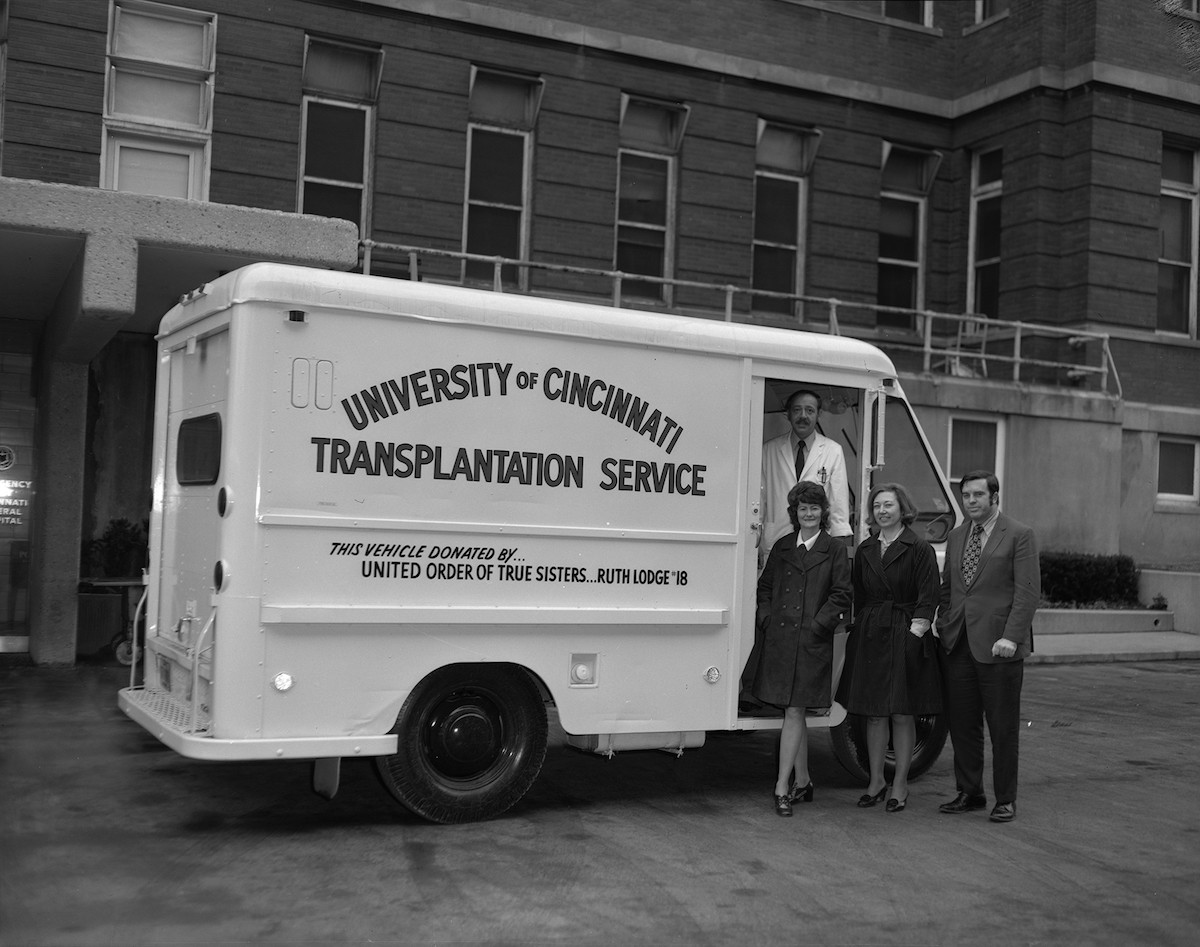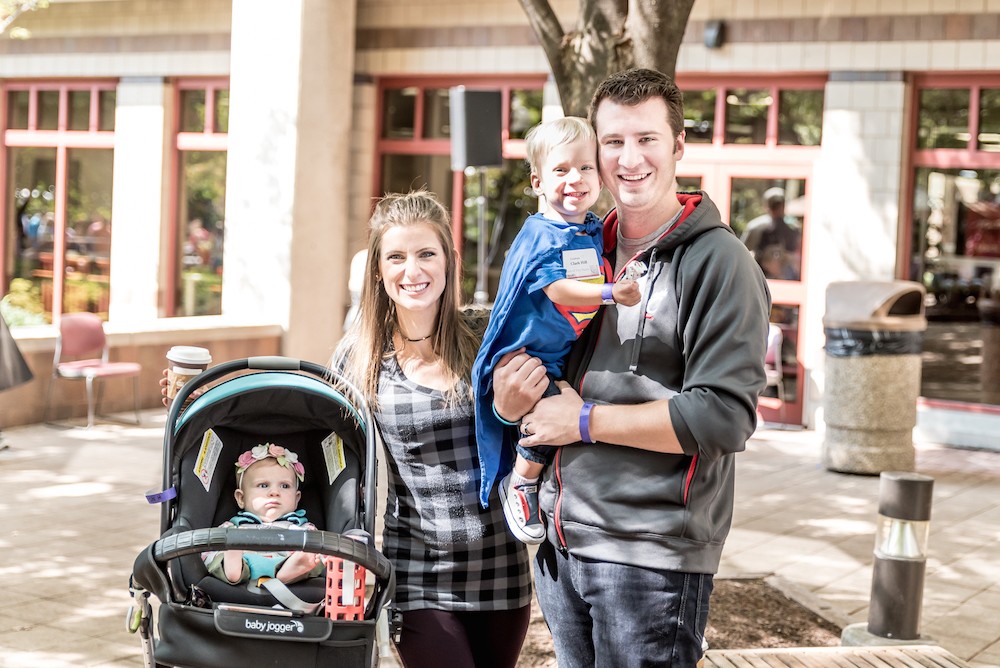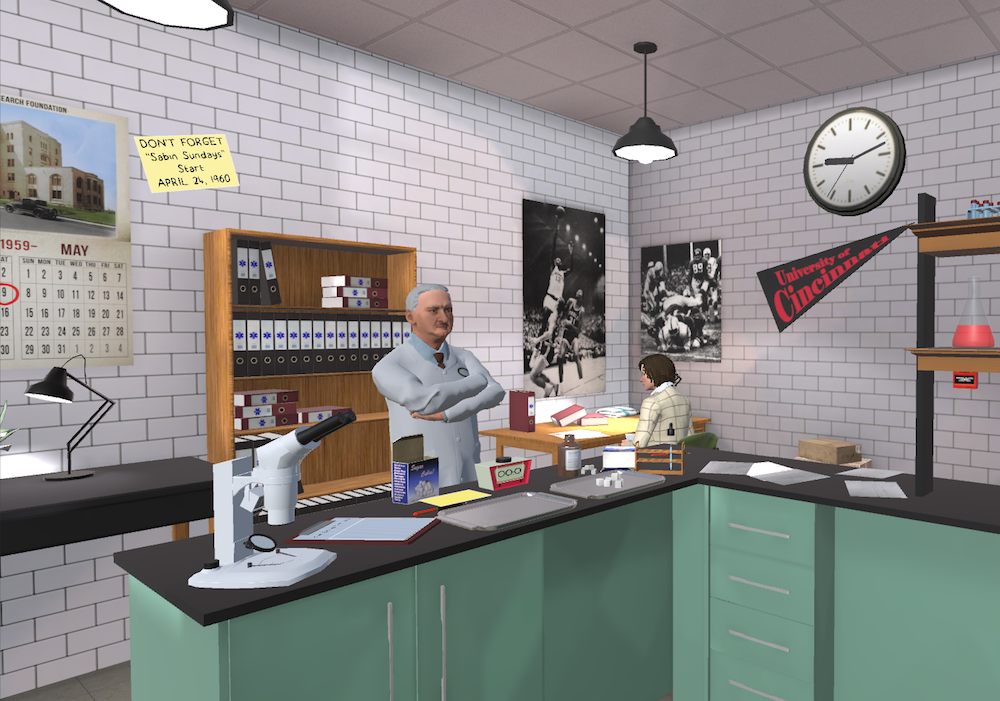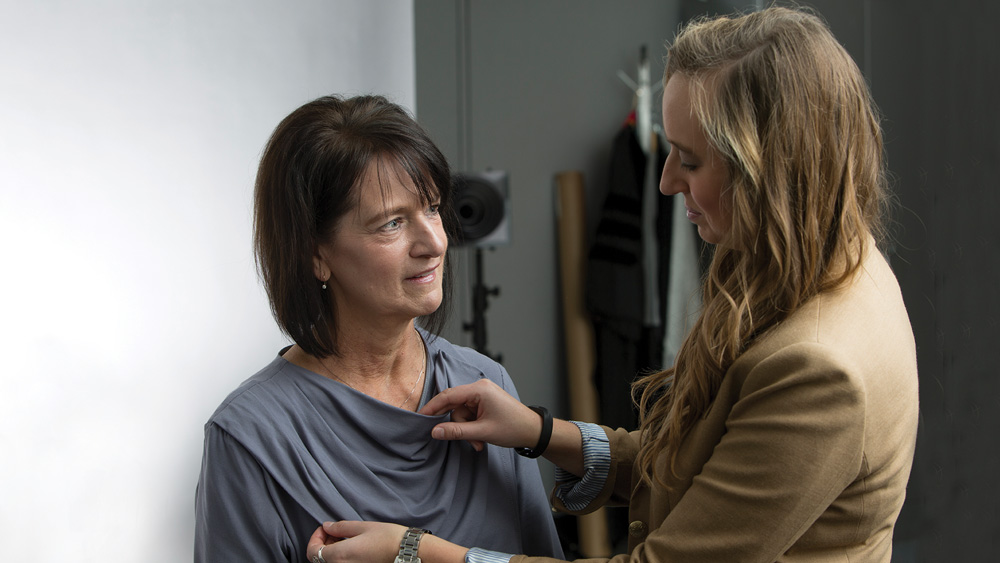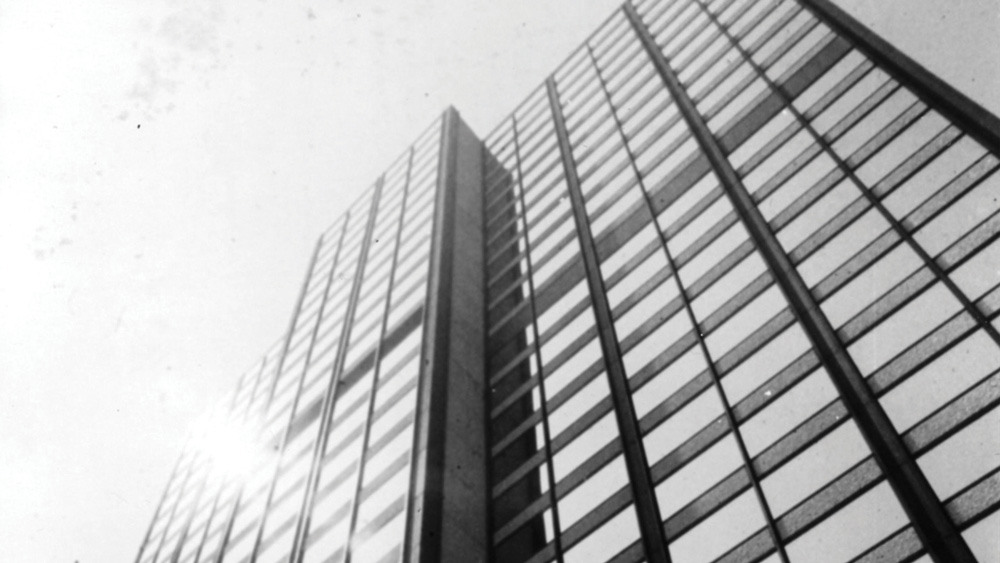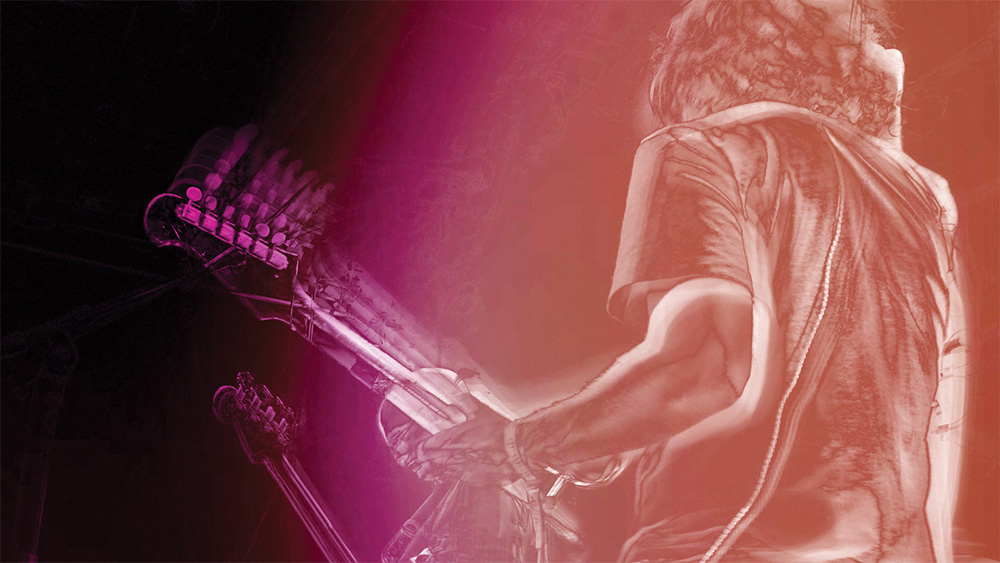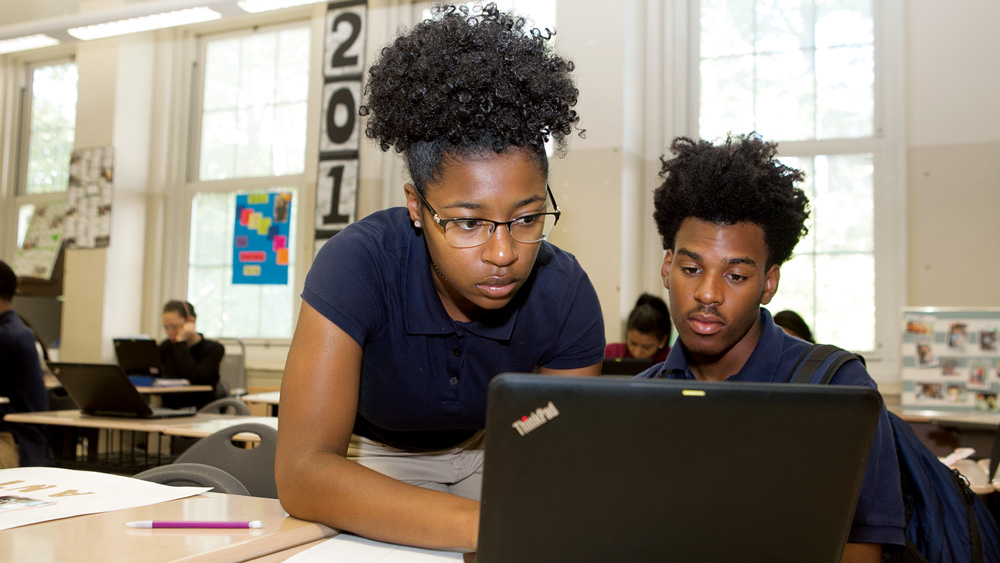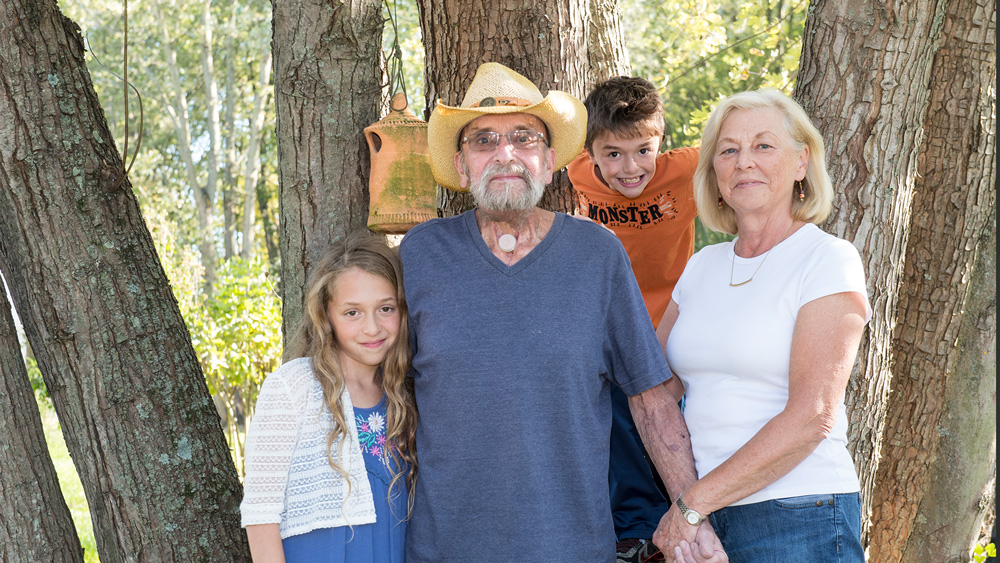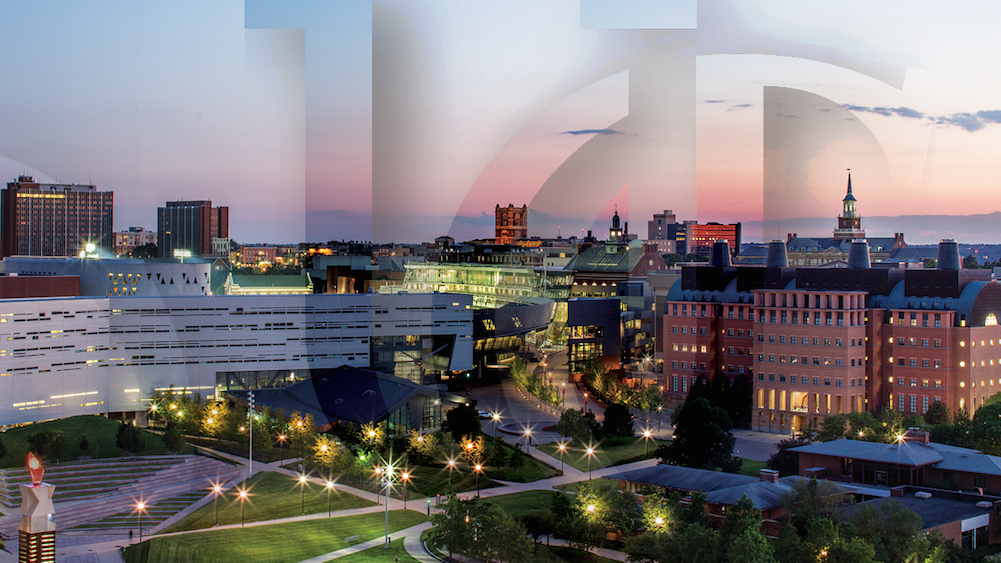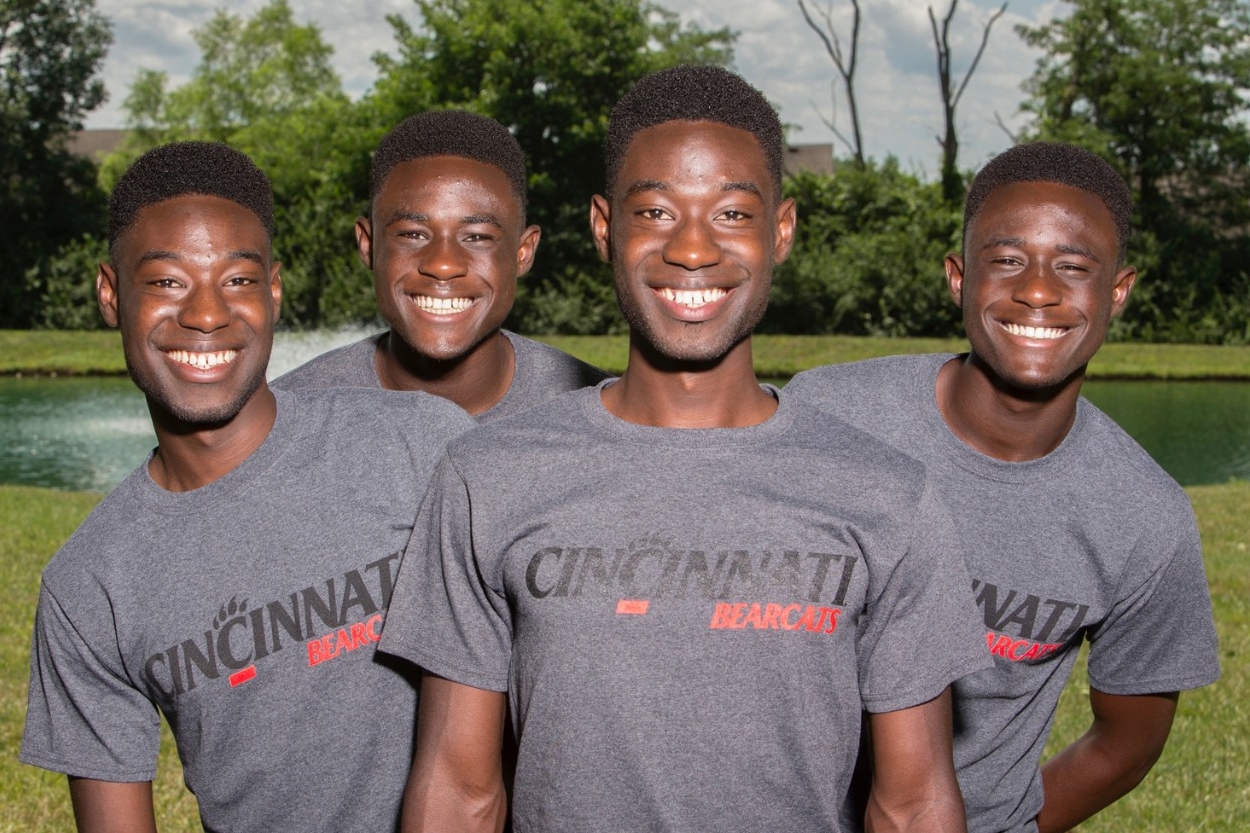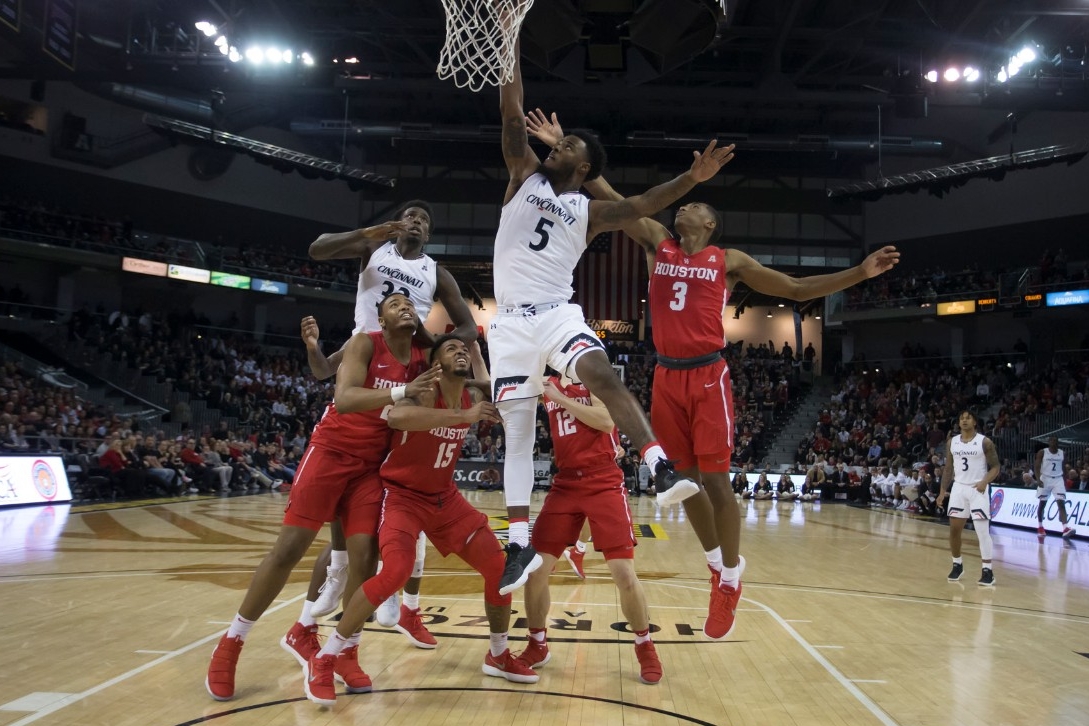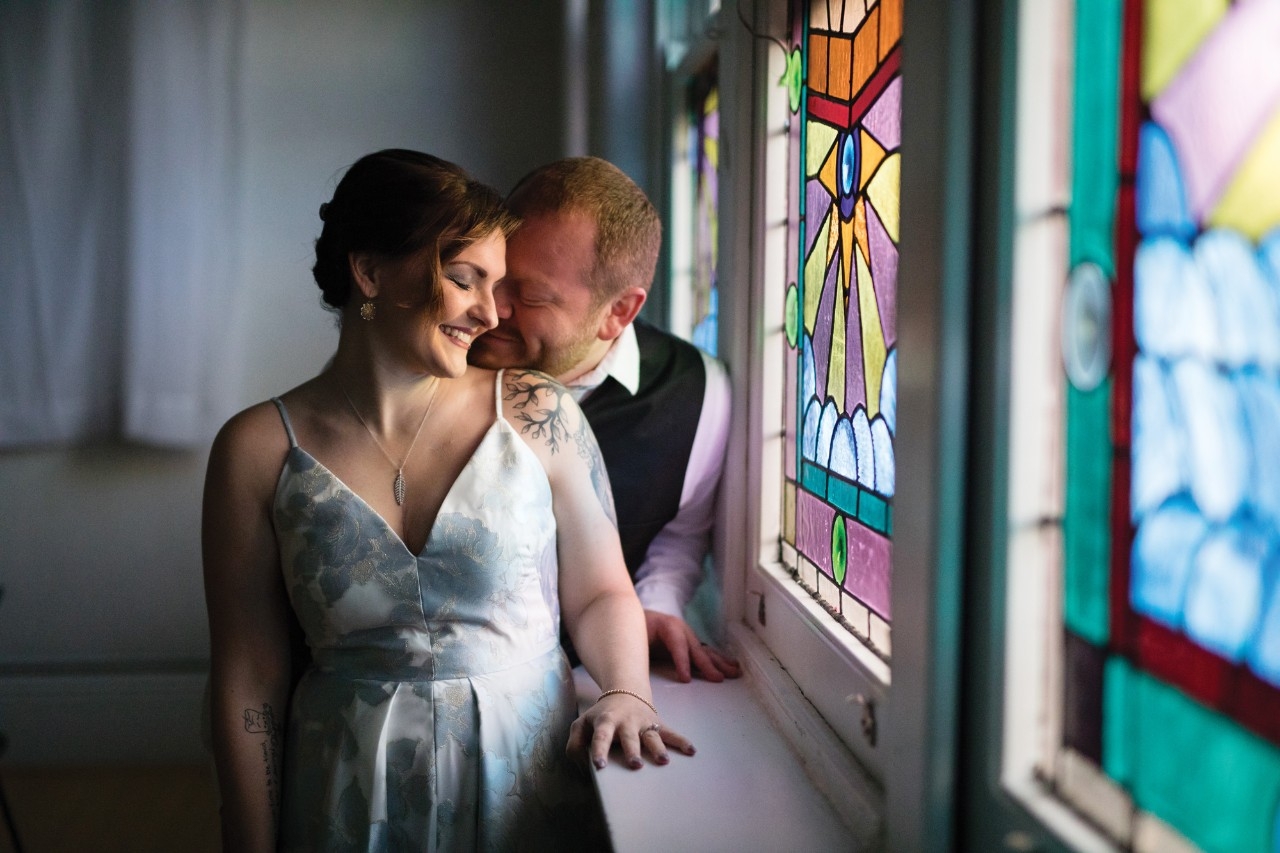Down the Drive
Just as the band uses Down the Drive to travel into the heart of campus, UC Magazine's Down the Drive section takes you to the heart of what's happening at UC.
In the more than two years since University of Cincinnati researchers unearthed the 3,500-yearold tomb of a Bronze Age warrior in southwest Greece, an incredible trove of riches has emerged, including four gold signet rings that have challenged accepted wisdom among archaeologists about the origins of Greek civilization.
But that wasn’t the only secret hidden there beneath the hard-baked clay. It would take another year before the so-called “Griffin Warrior” revealed his most stunning historical offering yet: an intricately carved gem, or sealstone, that UC researchers say is one of the finest works of prehistoric Greek art ever discovered.
The “Pylos Combat Agate,” as the seal has come to be known for the fierce hand-to-hand battle it portrays, promises not only to rewrite the history of ancient Greek art, but to help shed light on myth and legend in an era of Western civilization still steeped in mystery.
It took conservation experts more than a year to clean the limestone-encrusted seal, say dig leaders Shari Stocker, a senior research associate in UC’s Department of Classics, and Jack Davis, the university’s Carl W. Blegen professor of Greek archaeology and department head.
As the intricate details of the seal’s design emerged, the researchers were shocked to discover they had unearthed no less than a masterpiece.
Davis and Stocker say the Pylos Combat Agate’s craftsmanship and exquisite detail make it the finest discovered work of glyptic art produced in the Aegean Bronze Age.
“What is fascinating is that the representation of the human body is at a level of detail and musculature that one doesn’t find again until the classical period of Greek art 1,000 years later,” explains Davis. “It’s a spectacular find.”
Even more extraordinary, the husband-and-wife team point out, is that the meticulously carved combat scene was painstakingly etched on a piece of hard stone measuring only 3.6 centimeters, or just more than 1.4 inches, in length. Many of the seal’s details, such as the intricate weaponry ornamentation and jewelry decoration, become clear only when viewed with a powerful camera lens and photomicroscope.
Explore full feature on discovery
Marian Spencer, who wasn’t permitted to live in a dorm on the University of Cincinnati campus when she was a student, received a fitting honor when the UC Board of Trustees recently voted to name the newest residence hall after the civil rights pioneer.
Already a well-known figure at the university, the 1942 graduate’s name will now be permanently etched on campus when the new high-rise residence hall opens on Campus Green in 2018 as Marian Spencer Hall.
Spencer’s numerous accomplishments include leading the movement to desegregate Cincinnati public schools and the local Coney Island, becoming the first female president of the Cincinnati chapter of the NAACP and being the first African-American woman elected to Cincinnati City Council.
As a high school senior, Rae Mang chose UC because it was the farthest state school from her front door in Cleveland, Ohio. She’d have to pay for her own education, but Mang was eager to experience the world and become the first in her family to finish college.
“My mom was proud of the idea but puzzled,” says Mang.“ UC was 219 miles from my house. It was a leap of faith.” And it paid off. Mang graduated from UC’s Winkle College of Pharmacy in 1989.
It was also at UC where she met her husband, John, a 1988 graduate of the College of Engineering and Applied Science and fellow first-generation student. Because of their shared experience, they recently made a gift to help advance the Gen-1 program at UC that helps first-generation, lowincome students transition from high school to college, increasing their likelihood of earning a degree.
UC has taken its Gen-1 program to the next level by creating a student living community. The first of its type in the nation, UC’s Gen-1 Theme House is located in Stratford Heights, across from campus.
During a recent visit to the Gen-1 Theme House, Mang met and shared her own college experiences with students. Like them, she had to navigate university life without a family blueprint, not to mention taking on the financial burden of school.
“It’s hard to tell first-generation students, without being cliché, to keep at it,” Mang says. “I can definitely relate to them and remember that when you’re 18 or 19 years old, five years seem interminable. It’s a long haul, especially when you are the first down that path.”
Today, she is an adjunct instructor at Massachusetts College of Pharmacy and a University of Cincinnati Foundation trustee.
When Mang looks back on her experience at UC, she knows the long years were worth it.
“They were the base for everything.”
Two sets of identical twins from the same family — and their mother — now call the University of Cincinnati home. Alfred, Godfred, Kelvin and Alvin Mantey are the first documented double identical twin family to attend UC at the same time, but the journey they took to get here is even more incredible.
Originally from West Africa’s Republic of Ghana, parents Dorothy and Stephen Mantey were determined to send their sons, two sets of twins born four years apart, to college in the U.S. Father Stephen moved first, immigrating in 2002 to work in home health care and establish residency. A decade later, as older twins Alfred and Godfred graduated high school, the rest of the family was granted a visa to join Stephen.
Alfred and Godfred enrolled at UC — studying pre-medicine and pharmacy, respectively — while younger twins Kelvin and Alvin finished high school. This year all four brothers are on campus, with Alvin pursuing biological sciences and Kelvin interested in engineering and industrial design.
Meanwhile, after raising the boys on her own in Ghana as a working mother, Dorothy can now focus on her own dream of becoming a nurse.
“We wanted our boys to have an American college education,” says Dorothy.“With UC’s wide range of majors, top-rated programs and various colleges, the boys can fulfill their medical, pharmacy and engineering goals, and I can go back to school to [achieve] my lifelong dream of a nursing degree.”
For the Manteys, college life is a family affair.
Alumni Weekend 2018 will launch with the UC Alumni Association’s annual tribute to the outstanding accomplishments and contributions of its 300,000-member family. The UC Distinguished Alumni Celebration will be held April 12 in Cincinnati’s newly refurbished Music Hall and will honor 18 exceptional alumni, including four recipients of UCAA’s signature awards.
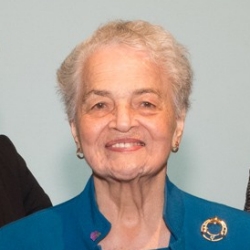
Marian Spencer
William Howard Taft Medal for Notable Achievement
Marian Spencer, A&S ’42, Hon ’06
For nearly 80 years, Spencer has been a catalyst for the advancement of civil rights, demonstrating a ceaseless commitment to fairness and equality for all members of society. Her work led her to become Cincinnati’s first African-American woman to serve on city council and as vice mayor (among many other firsts). She has always focused her energies on critical issues fundamental to societal progress and, as a result, received countless honors saluting her passion and fortitude in challenging the status quo in the name of justice. She recently donated to UC her personal archives that document the careers of her and her late husband, Donald, through a lifetime of peaceful fighting for right.
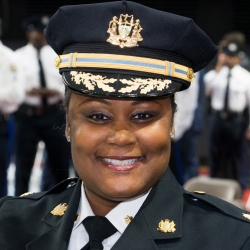
Jacqueline Bailey-Davis
Mosaic Award
Jacqueline Bailey-Davis, CECH ’92
A 20-year veteran with the Philadelphia police department, Bailey-Davis has been frequently decorated for her citizen interactions, for extending new opportunities to others and for her support for criminal justice education as a means to enhance the lives of those in her community. Her responsibilities include monitoring the department’s progress on its work related to the U.S. Department of Justice Collaborative Reform and its 21st Century Policing initiative, after having served as the Philadelphia police department’s liaison to the 2016 White House policing briefing series to identify and implement national best practices.
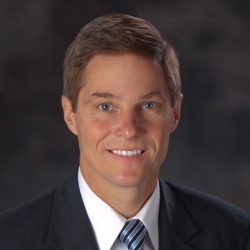
Rusty Myers
Distinguished Service Award
Russell “Rusty” Myers, Bus ’82
For 35 years, Myers has rendered faithful, passionate and expert service to his alma mater across multiple areas. His contributions have elevated the university’s advancement initiatives, the Carl H. Lindner College of Business and its real estate program, UC athletics and other segments of the UC community. The fourth member of his family over three generations to lead the UC Alumni Association and currently a member of the UC Foundation’s Board of Trustees, Myers is revered for his wise counsel, clarity of purpose and humble brand of servant leadership.
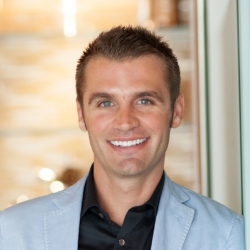
Austin Allison
Jeffrey Hurwitz Young Alumni Outstanding Achievement Award
Austin Allison, CEAS ’08
An entrepreneur of uncommon accomplishment at a very early age, Allison launched a company called Dotloop in 2009 just one year after earning his degree in construction management. His startup soon began to revolutionize the real estate industry through its innovative and comprehensive online platform that seamlessly and securely handles all necessary document sharing and transactions between buyers and sellers. Within three years, he was hailed in an Entrepreneur magazine cover story and included in Forbes’ “30 Under 30” list of young business leaders.
2018 Outstanding Alumni Awards
College of Allied Health Sciences
Erin Head, CAHS ’10
McMicken College of Arts and Sciences
Glen Weissenberger, A&S ’69
Department of Athletics
Jolinda Lewis-Miller, A&S ’98
Blue Ash College
Marjorie McDaniel, UCBA ’90
Carl H. Lindner College of Business
Leigh Fox, Bus ’01
Clermont College
Kevin Miles, Cler ‘91
College-Conservatory of Music
Aik Khai Pung, M (CCM) ‘09, D (CCM) ‘14
College of Design, Architecture, Art, and Planning
Donald Jacobs, DAAP ’67
College of Education, Criminal Justice, and Human Services
Sandra Wiesmann, CECH ’66
College of Engineering and Applied Science
Christopher Hersman, CEAS ’88
College of Law
Daniel Carmichael, Pharm ’65, Law ’68, Hon ’06
College of Medicine
Arden Wander, Med ‘67
College of Nursing
Nancy Robert, ’78
James L. Winkle College of Pharmacy
Mimi Hart, Pharm ’78
The Islamic Center of Greater Cincinnati is donating $1 million to create the Inayat and Ishrat Malik Professorship in Islamic Studies within UC’s McMicken College of Arts and Sciences. Funding for this gift came directly from Inayat and Ishrat Malik — Dr. Inayat Malik is a urologist with The Urology Group and a pioneer in the local Muslim and interfaith community.
The Malik Professorship marks a new era for UC by rounding out its complement of expertise in Abrahamic religions; Judaic and Catholic studies chairs already exist. The new position will allow the university to boost classes and research related to Islamic studies that already include a strong focus on the Middle East and Arabic language and culture.
The Maliks, the Islamic Center and UC have a long history together. Dr. Malik came to Cincinnati in 1967 to specialize in urology at the UC Medical Center and subsequently became a leader in the Muslim community. He was on the clinical faculty of the UC College of Medicine for more than 20 years and in private practice for most of his career. Dr. Malik is not the only family member with ties to the university — four out of the Maliks’ five daughters are UC alumnae.
The local Islamic Center has roots in Clifton dating back more than 50 years. Growth in the local Muslim community resulted in the creation of the present-day center, which now sits on an 18-acre campus in West Chester and is celebrated for its strong interfaith relationships, cross-cultural understanding and community service. Dr. Malik was instrumental in its creation, serving as the first board chair for 18 years.
“We have a significant Muslim population in the area now, many of them affiliated with UC Medical Center,” says Dr. Malik. “Ishrat and I felt that we needed to make this resource available to UC, not just for the sake of the Muslim community but for the larger community so they have an understanding of the history of Muslim civilizations and contributions.”
The Maliks see their support of UC, the Islamic Center and other civic work as part of their faith, which teaches that whatever gift you’ve been given, you share with others.
For 50 years, UC Health and the University of Cincinnati have been providing hope to thousands of transplant patients.
On Dec. 11, 1967, 36-year-old Cincinnati police officer Ernest Harper made local medical history when he received a kidney from his sister, Elizabeth, in the first transplant operation at UC Medical Center. The then-experimental procedure was performed by Dr. J. Wesley Alexander, who pioneered transplantation in Cincinnati.
Today, UC’s world-renowned transplant surgeons perform regular heart, kidney, pancreas and liver transplants for patients, often with complex conditions.
In the earliest days of transplantation, living kidney donation was the most common type. Deceased organ donation remained challenging because the requisite organization and infrastructure had not been established. The organ donation “wagon” shown above was among the earliest developments for organ donation in Cincinnati.
This vehicle allowed for transportation of transplant surgeons, support personnel, equipment and supplies to outlying hospitals for organ procurement procedures. In the 1980s, infrastructure, standard operating procedures and support networks for organ donation became established across the country. A national organ donor network in the United States was not created until Congress passed the National Organ Transplant Act in 1984. The network is now known as the United Network for Organ Sharing.
Not all superheroes wear capes — but some do.
The UC Medical Center Neonatal Intensive Care Unit (NICU) sees hundreds of premature babies each year — nearly 850 in 2016. It’s an uphill battle for many of these tiny patients, but doctors, nurses and staff are there to provide the best care from the Level III NICU.
More than 100 NICU “graduates” — past patients and their families — recently reunited with some of those UC Health caregivers for a superhero-themed celebration in the hospital’s courtyard. The biennial event was sponsored by Friends of Tiny Hearts, the volunteer organization that provides support to the UC Medical Center NICU and its families.
For the Hill family of Cleves, Ohio, it was an opportunity to reconnect with those who had made a huge impact on their lives.
Two years ago, Dana and Greg Hill found themselves at the UC Medical Center under completely different circumstances. Their twin boys were born three months premature, and one passed away due to illness. The family spent three months in the NICU before they could take their son, Clark, home.
Today, Clark is a happy, healthy 2-year-old. He wore a Superman costume and posed for photos at the event.
“I love everybody here,” Dana Hill said at the reunion. “It’s the hardest thing you can ever go through, and they made it so much easier.”
As the University of Cincinnati Bicentennial approaches in 2019, UC is busy planning many celebrations that honor the university’s past while looking forward into the future.
One such element is a virtual reality experience that will enable visitors to view and interact with several UC stories — developed with themes such as Bearcat Spirit, UC on the Move or the History of Diversity at UC. The project is being developed by students working with UC’s Center for Simulations & Virtual Environments Research (UCSIM).
Each vignette will deliver an engaging, interactive experience via VR headsets, with proposed installations in Tangeman University Center, University Pavilion, UC Blue Ash, UC Clermont and more.
For instance, UCSIM is currently designing a VR experience called the Cutting Edge, in which users will travel back in time to Dr. Albert Sabin’s lab as he makes his discovery of the polio vaccine. Sabin joined the UC College of Medicine in 1939 and developed an oral polio vaccine that was widely distributed by 1960. He is credited with nearly eradicating the disease.
Users will be able to interact with Dr. Sabin as a lab assistant, virtually “walk” around his lab, review his notes and use the equipment. Developers referred to Sabin’s original materials in the creation of this vignette. Leaving Sabin’s lab, users will interact with other scientists from UC’s history.
“The University of Cincinnati story is unfolding one boldly Bearcat moment at a time,” says UC President Neville Pinto. “ Our Bicentennial celebration honors the past, elevates the present and bends the future. It propels us onward to our next exciting quest in an epic of unlimited possibilities.”
Discover more about UC's Bicentennial
FEATURES
Inspired by her mother, DAAP alumna launches clothing line for women recovering from breast surgery.
The 1991 implosion of UC’s Sander Hall continues to reverberate with the upcoming release of a powerful new book about the building’s architect from the perspective of his daughter.
Matt Berninger and Scott Devendorf of alt-rock band The National reflect on their formative years at UC.
UC’s new high school ambassador program could serve as a national model for helping low-income and first-generation students attend college.
How a local man gained precious time with his family thanks to innovative UC cancer treatment.
Leading urban public universities into a new era of innovation and impact.

